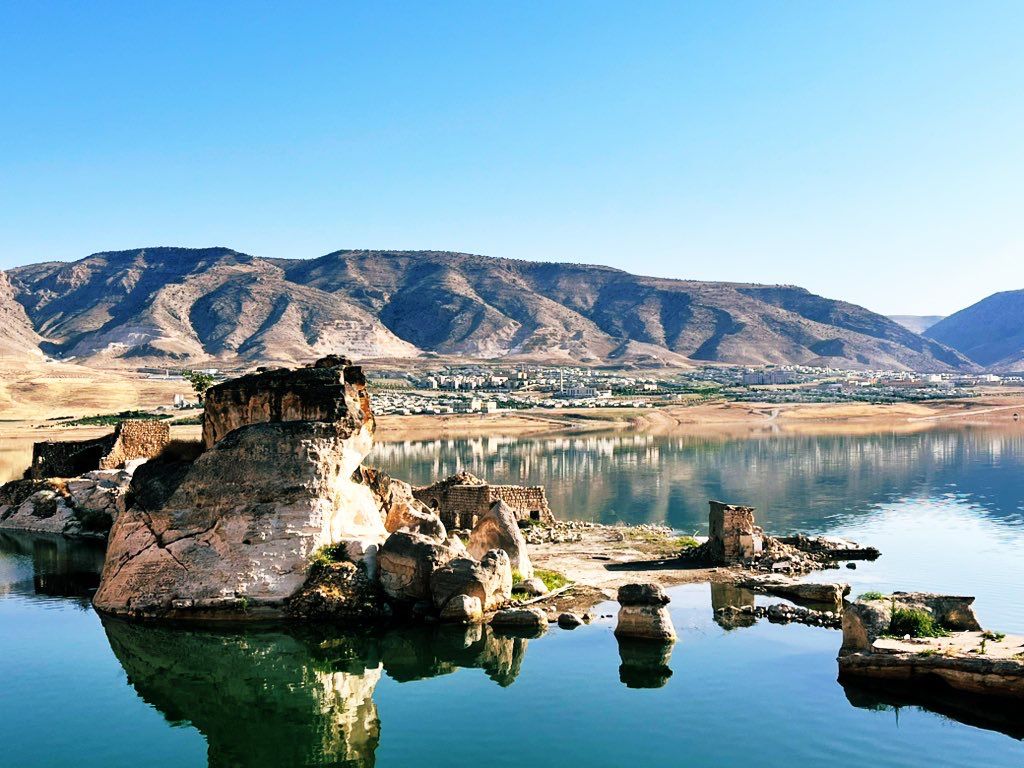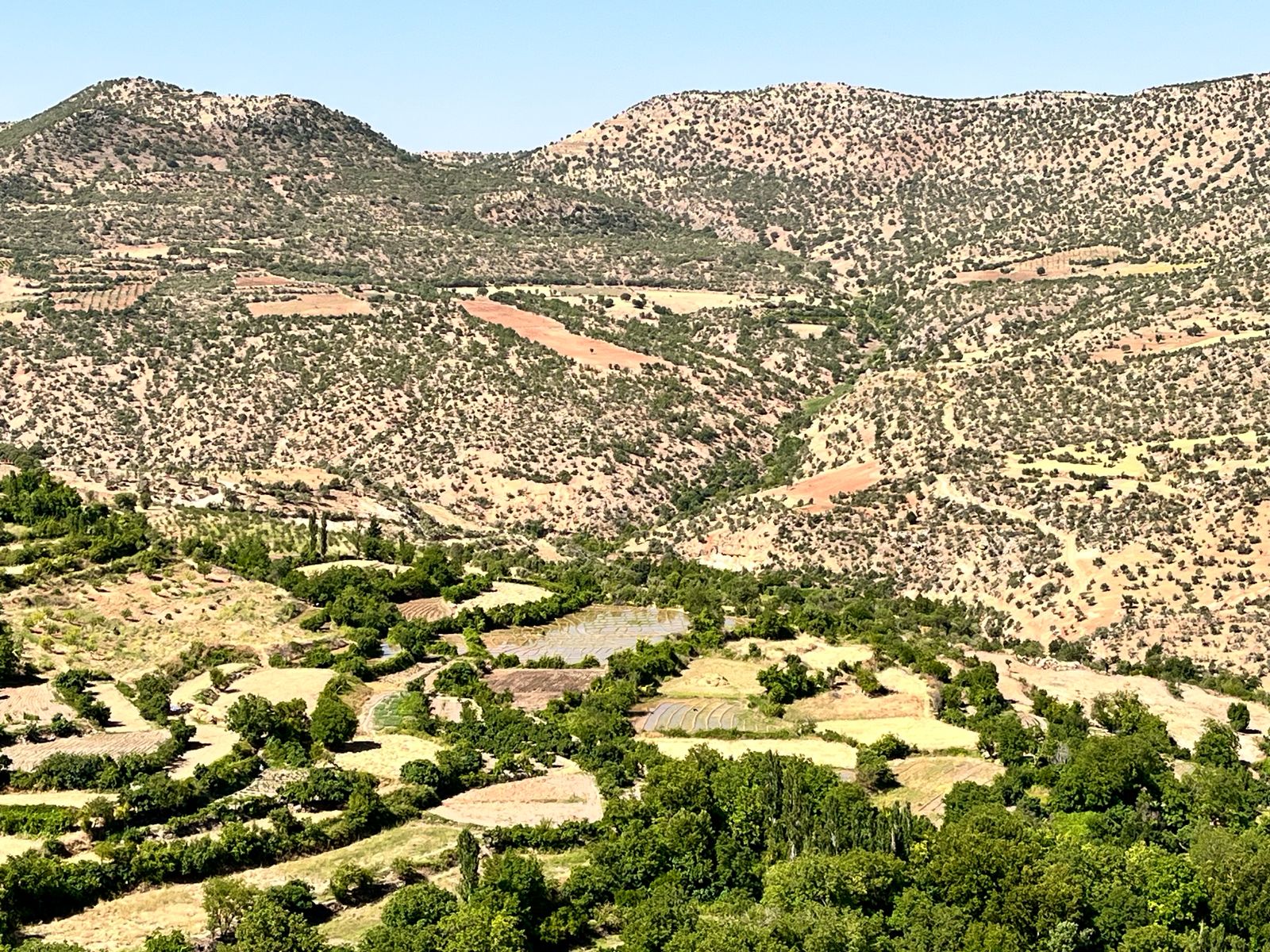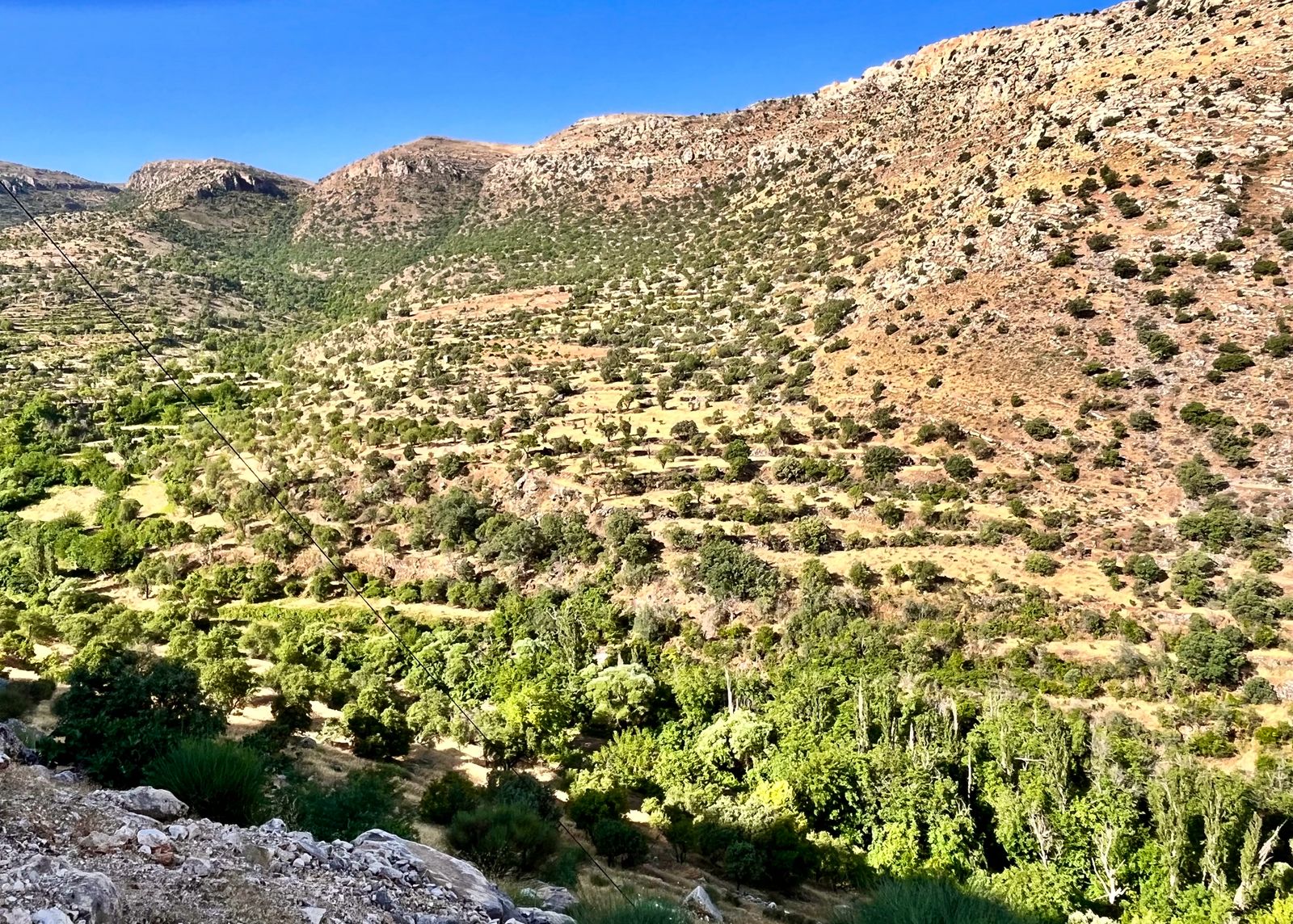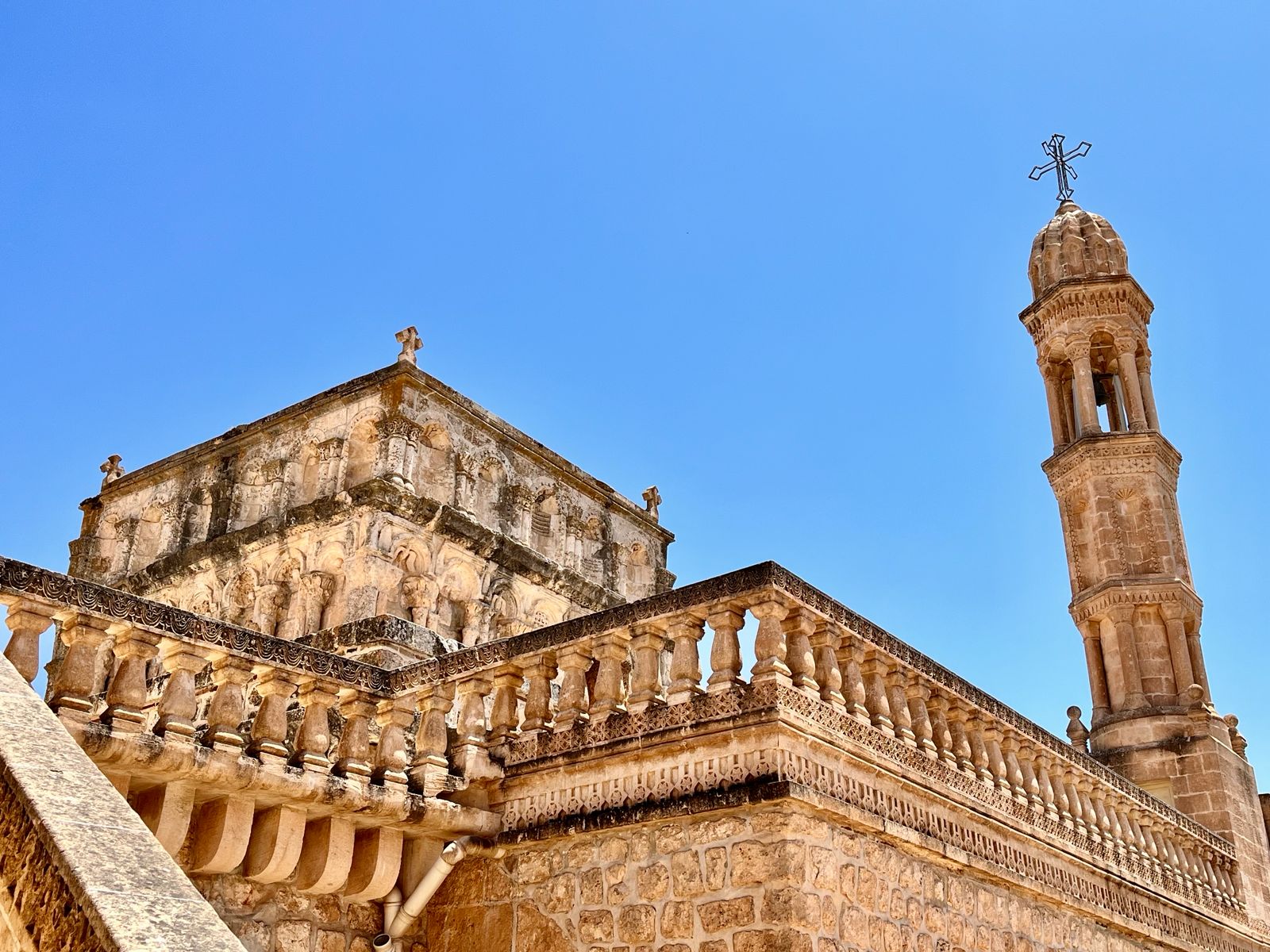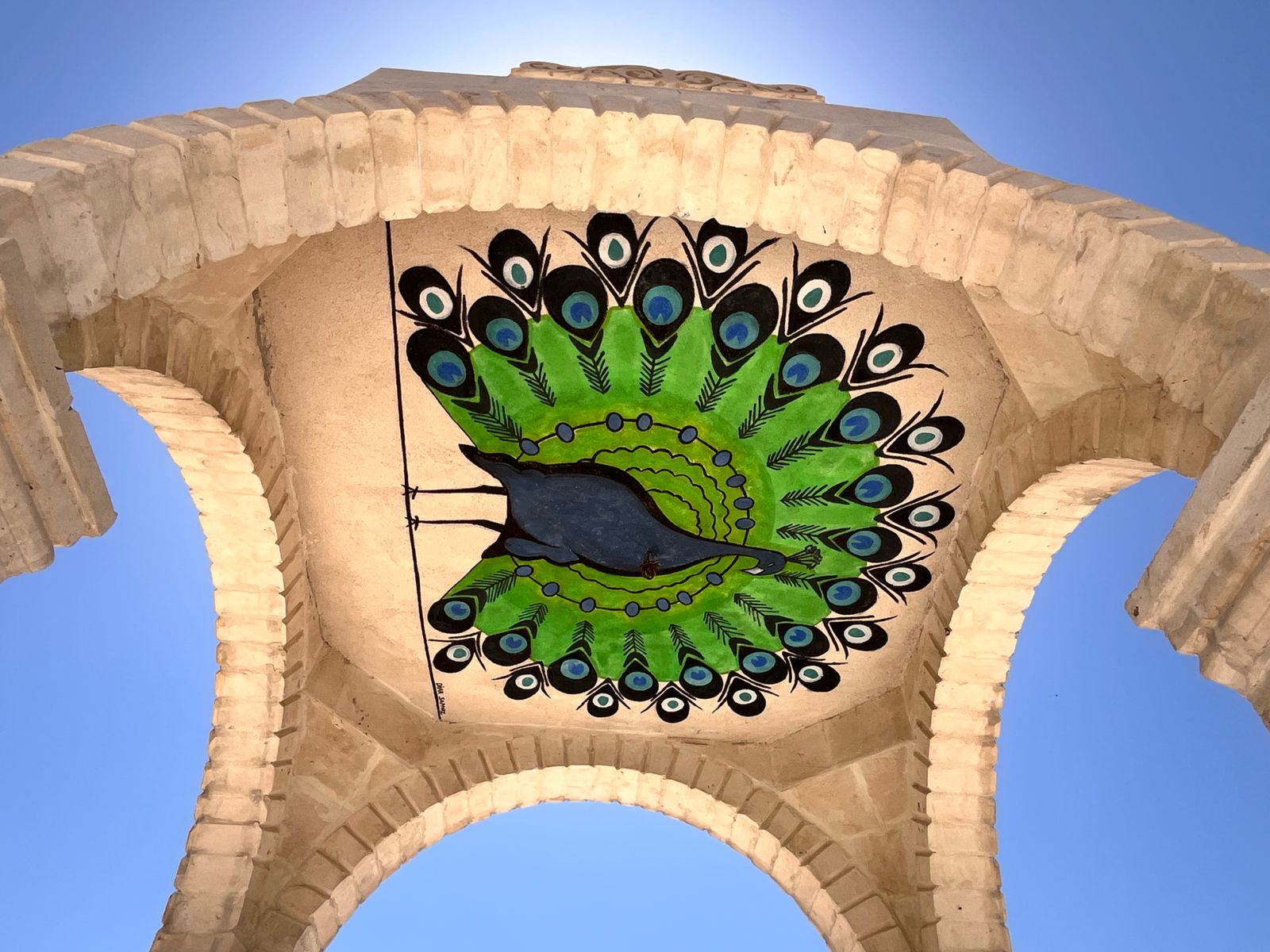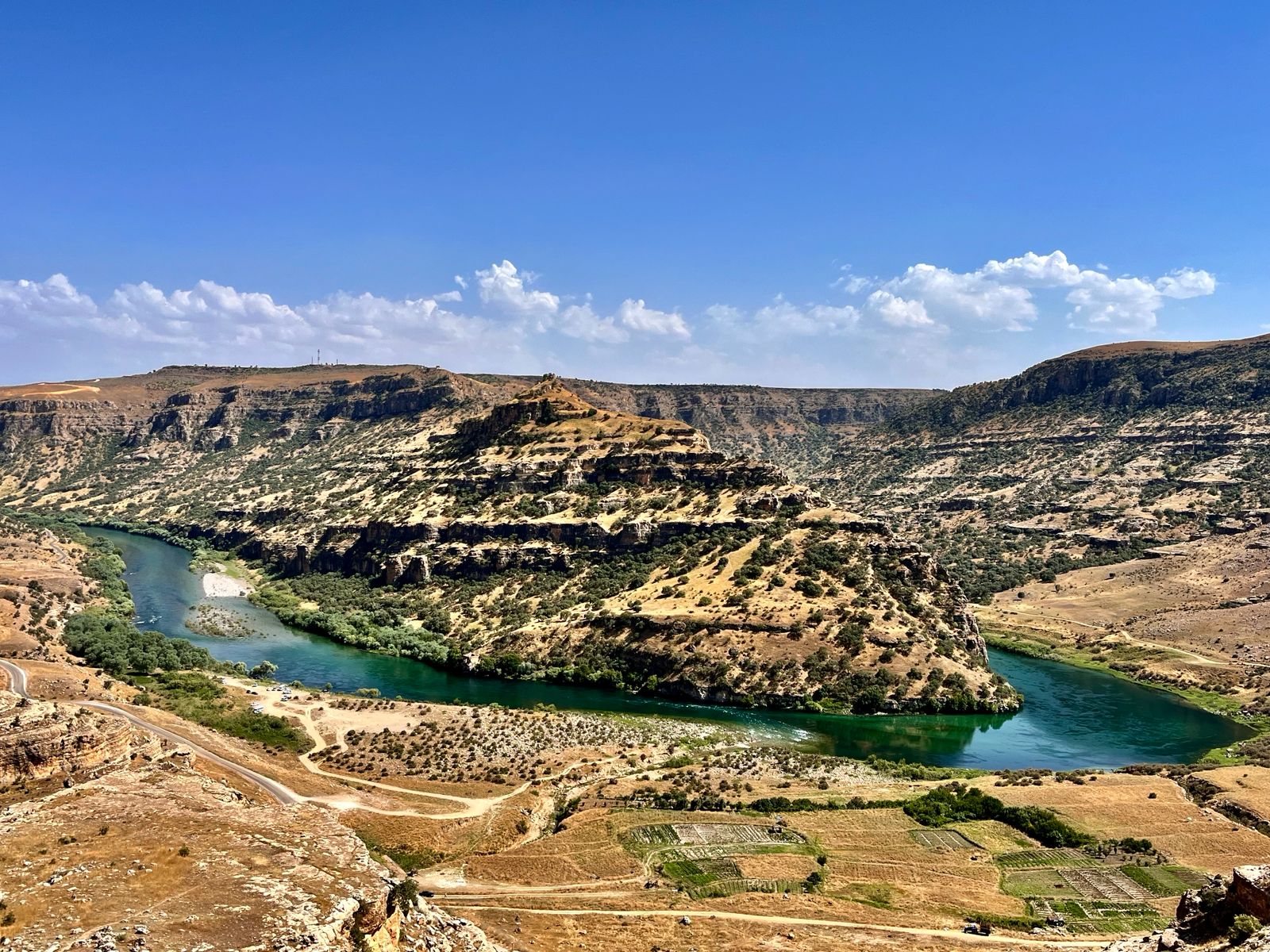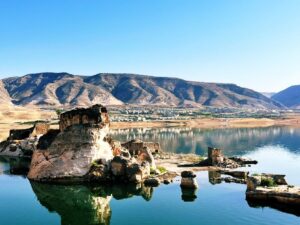
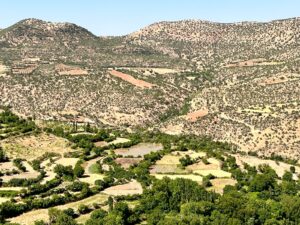
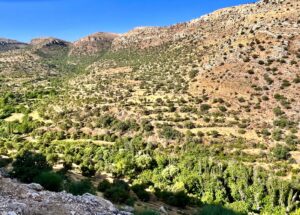



In June 2024, the Izmir School team embarked on an expedition across Southeastern Anatolia—tracing the ancient landscapes of Mesopotamia through the provinces of Mardin, Batman, and Şırnak. The purpose of the journey was multifaceted: to document the architectural ingenuity, ecological adaptation, and agricultural wisdom deeply rooted in one of the world’s oldest cultural landscapes—the Tigris River Basin.
Architectural Echoes of the Land
One of the most striking findings of the expedition was the presence of diffusive space principles in regional architecture. From ancient stone dwellings to communal religious structures, the buildings demonstrate an elegant harmony with the environment. These architectural forms mirror the natural ecosystems surrounding them, shaped over centuries to adapt to the region’s challenging topography and climate.
In particular, the Syrian Christian villages of Şırnak and Mardin stood out as enduring examples of environmental adaptation. The stone-built settlements, carved and constructed with precision, serve as living case studies of harmony with nature. These villages offer critical insight into how architecture can not only withstand harsh climates but also contribute to ecological resilience—lessons that are more vital than ever in the face of a global climate crisis.
Ancient Agroecology in the Tigris Basin
Beyond architecture, the expedition focused heavily on the ancient riparian production landscapes of the Tigris Basin. As researchers from the Izmir School’s Agroecology Lab discovered, these landscapes are not relics of the past, but dynamic systems offering innovative approaches to today’s ecological challenges.
In the village of Gönüllü in Batman province, for example, locals have ingeniously transformed arid, karstic hills into thriving rice fields. By designing and utilizing a fractal-model irrigation system to channel spring water, they’ve made efficient use of every drop in a region where water scarcity is the norm. These practices are accompanied by rainwater harvesting systems and the development of drought-resistant crop varieties, cultivated over generations.
Such techniques are far from obsolete—they represent a living heritage. In a time of increasing desertification and climate instability, the Tigris Basin offers grounded, time-tested solutions that modern agricultural systems would do well to learn from.
Sadly, many of these ancient agroecological practices—and the unique crop varieties they support—are under threat. As industrial agriculture expands and traditional knowledge fades, the risk of losing these vital systems grows. Yet, there is still hope.
The Izmir School’s Ecology of Food Lab is committed to preserving and studying these remote practices. By engaging directly with local communities, documenting techniques, and promoting knowledge exchange, the lab aims to ensure that this wisdom is not lost but revitalized for a more sustainable future.
The 2024 Tigris Basin Expedition underscored a simple truth: the past holds answers for the future. In the stone architecture of Mardin, the irrigated fields of Gönüllü, and the terraced landscapes of Mesopotamia, we find not just history, but blueprints for resilience.
In an age marked by ecological uncertainty, the lessons from Anatolia and Northern Mesopotamia are more relevant than ever.

